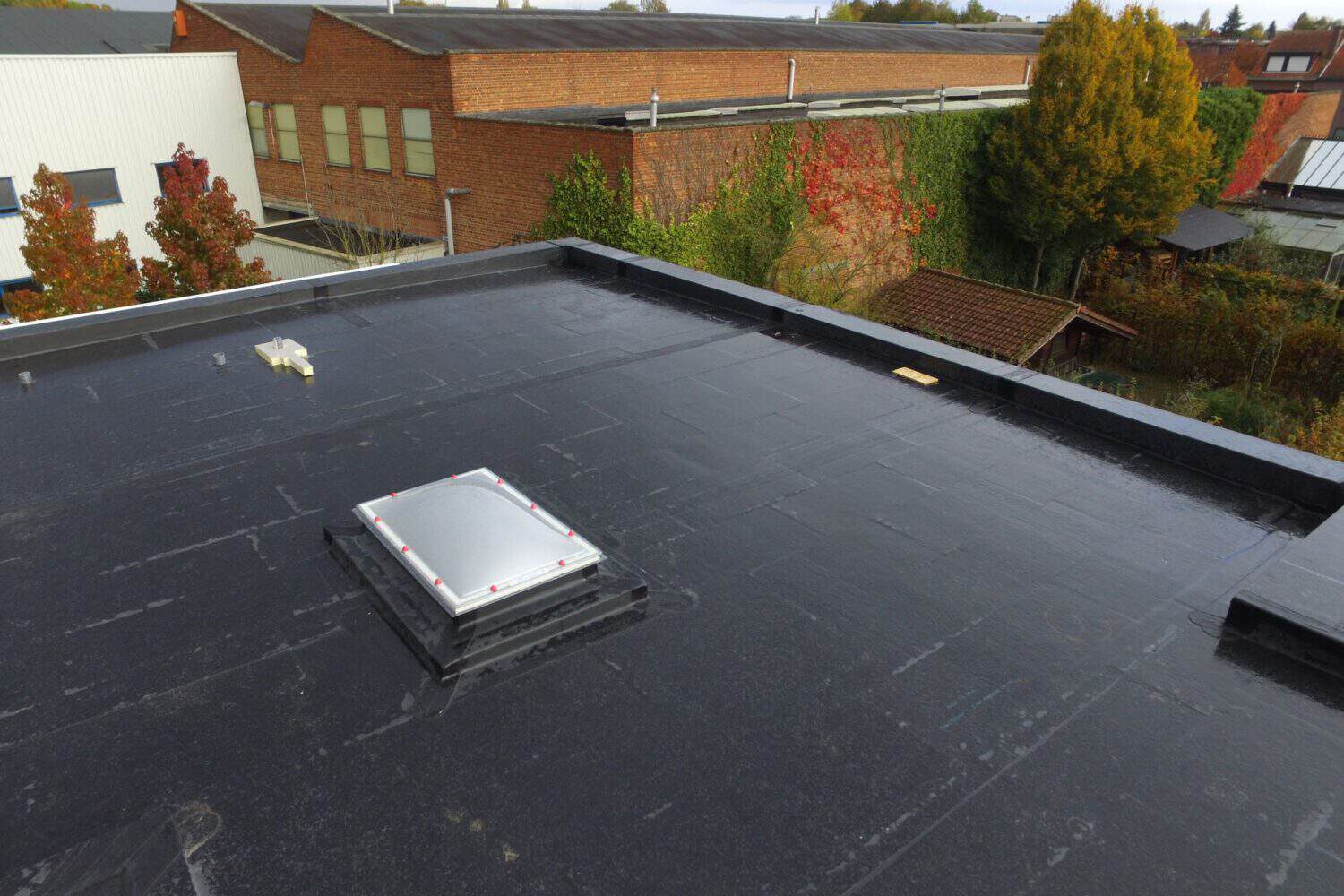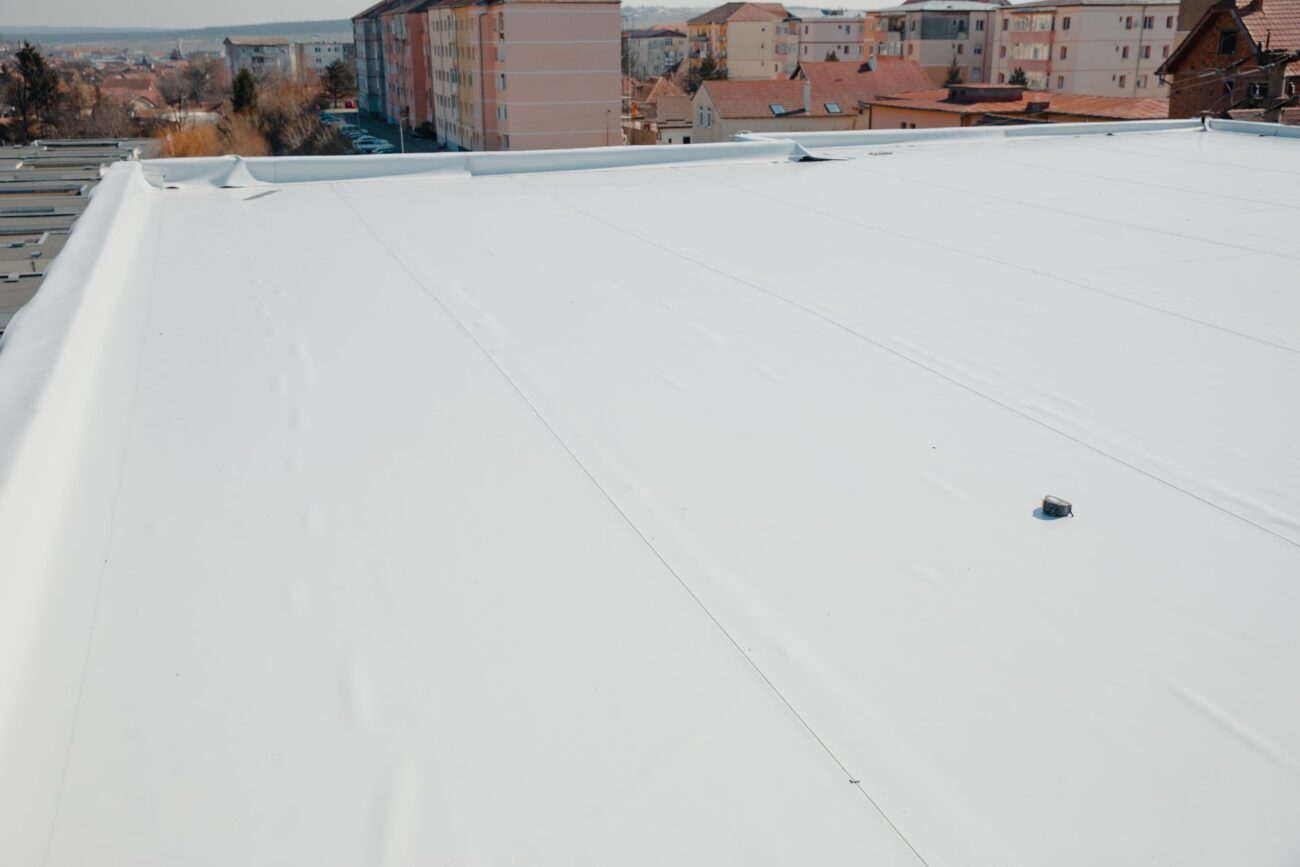Flat roofs have recently become a popular choice for residential and commercial buildings. Homes with flat roofs offer a contemporary and space-efficient architectural design, giving Minnesota homeowners a unique blend of modern aesthetics and practicality.
Considering flat roof pros reveals a number of advantages, from cost-effectiveness to efficient space utilization, making it a compelling option for homeowners and business owners alike. However, in a state like Minnesota, flat roofs can be a risky option to consider, particularly when it comes to the extreme weather.
This article explores the pros and cons of flat roofing in Minnesota and provides homeowners, commercial building owners, and homebuyers with the essential information they need to make that critical decision whether to install a flat roof or buy a property with a flat roof.
What is a Flat Roof?
Before discussing any pros or cons of flat roofs, let’s explore what a flat roof is. A roof, such as a sloped roof, is usually constructed with an incline to allow for water drainage. This incline helps reduce the risk of water pooling on top of the roof itself, causing damage. However, not all roofs have to be built with a slope. Flat roofs, for example, have a relatively low slope, often with a pitch of 10 degrees or less, and feature a horizontal or nearly horizontal design.
Advantages of Flat Roofing in Minnesota
Exploring flat roof advantages and disadvantages is a key component in deciding on whether to install one for your home or business. There are a number of flat roof advantages, including the following:
- Efficient Space Utilization: There are many space saving benefits of flat roofs. They can be used as rooftop gardens, outdoor entertainment spaces, and can even be fitted with solar panels to improve the home’s energy-efficiency.
- Cost-Effective Construction: Flat roofs tend to require less material and less labor to install in new buildings; the simplicity of the shape might also result in less expense for installation over time compared with more complicated roofs with slopes.
- Energy Efficiency: Flat roofs can help with energy efficiency because they can be installed with roof coverings that can be reflective. Roof coverings that are reflective help reflect sunlight and, therefore, can help lower energy costs associated with cooling in hot summers of Minnesota.
- Easy Accessibility: Flat roofs are easier to maintain than pitched, because maintenance operations are much easier to carry out: for example, a cleaner or inspector can get to the entire roof with far less risk and far greater ease.
- Modern Aesthetics: Flat roofs add a streamlined, modern look to otherwise conventional residential and commercial buildings. This can be especially attractive to those seeking a distinctive architectural style.
In addition, it’s important to understand how commercial buildings with flat roofs can embrace modern aesthetics. Although a cost-efficient roofing solution, business owners in Minnesota must consider whether a commercial flat roof would be appropriate for their property.
Disadvantages of Flat Roofing in Minnesota
While acknowledging the benefits, it’s crucial to weigh the flat roof cons, including drainage challenges, snow build up, and potential maintenance requirements, offering a comprehensive understanding for property owners in Minnesota.
- Drainage Issues: One of the major disadvantages of flat roofs is their ease of draining. However, it is important for an owner to make sure that the water drains properly. In regions with a lot of snow or rain, like Minnesota where I currently live, ensuring the roof can drain efficiently is of utmost importance to make sure the roof doesn’t have puddles of water which can lead to a leak and damage the structure.
- Snow Buildup: Because flat roofs have a pitched roof angle of less than five degrees, if it snowed, these roofs would collect a lot of snow, particularly in harsh winters such as in Minnesota. Too much snow could stress the interior structures significantly, potentially causing serious damage to the houses.
- Limited Insulation Space: Flat roofs have minimal space for insulation, so they might struggle to achieve full energy efficiency, forcing them to use more heat during Minnesota’s cold winters.
- Ongoing Maintenance: Although maintenance is required for both flat roofs and sloped roofs, maintenance for a flat roof is required more frequently. Routine inspections can help prevent and stop leaks and water infiltration.
- Lifespan Issues: Flat roofs often have shorter lifespans when compared to sloped roofs. If the flat roof is not properly designed, built, or well maintained, it will require more frequent replacement which increases total overall cost in the long term.
Maintenance Tips for Flat Roofs in Minnesota
To ensure the most benefits and avoid the drawbacks of flat roofs in Minnesota, maintaining it well is essential. Here are some essential maintenance tips:
- Regular Inspections: Address issues promptly by regularly inspecting your flat roof for damage, water pooling, or debris that blocks drainage
- Clear Snow Buildup: When snow falls, remove it right away before its weight becomes a factor. By using the right tools and equipment you can prevent damage to the roofing materials.
- Address Drainage Issues: Gutters, downspouts, and drainage systems should always be clear of debris and properly doing their job. Consider adding supplemental drainage if needed.
- Seal and Waterproof: Waterproof your roof to prevent leaks and improve its lifespan and always be on the lookout for any water entry points.
- Professional Maintenance: Have your flat roof professionally inspected at least once a year by a roofing specialist. This expert can alert you to any issues and repairs necessary. If they see damage, they will suggest roof repair work be done.
Installation and Professional Services
Always ensure you hire an expert roofing professional when looking for a flat roofing system for your Minnesota property. Only a roofing expert will be able to design and build a roof system that can handle the extreme weather patterns in Minnesota.
- Hire a Qualified Contractor: Hiring a contractor with experience installing flat roofs in Minnesota is a prerequisite. Before beginning the work, validate the contractor’s licenses and references, read online reviews, and consult with friends, family, or even neighbors for advice.
- Climate-Appropriate Materials: Work together with your contractor to find roofing materials that work well for Minnesota climate. Consider high-durability, temperature-resistant materials with good drainage.
- Comprehensive Design: Make sure the design of the flat roof works for Minnesota’s climate (which means accommodating snow loads as well as rain and temperature extremes).
- Regular Professional Inspections: Have your existing flat roof inspected by a professional regularly in order to spot potential problems or rapid wear and tear over time.
Conclusion
Characterized by their minimal pitch, a low slope roof, often synonymous with flat roofs, presents an architectural option that is not only aesthetically pleasing but also practical for both residential and commercial buildings in Minnesota.
However, understanding flat roof pros and cons is essential for Minnesota homeowners in making an informed decision. On one hand, flat roofs provide space-saving, cost efficient, and modern sensitive aesthetics for buildings. However, flat roofing can be challenging at times as problems with drainages and snow can result, resulting in regular maintenance.
If you are considering a flat roof for your home or business, contact the experts at Summit Construction Group. Our professional installers and after sales service can make flat roofing in Minnesota a success.


